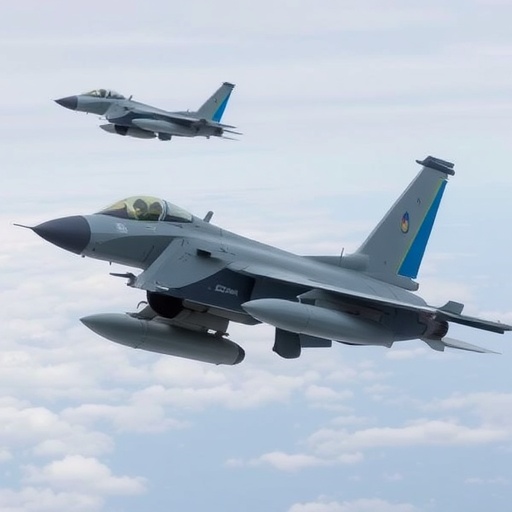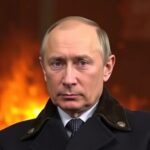France Commits Aster Missiles and Mirage-2000 Jets to Strengthen Ukraine’s Fight Against Russian Forces
In a bold escalation of Western support, France has announced it will supply Ukraine with advanced Aster surface-to-air missiles and refurbished Mirage-2000 fighter jets, marking a significant boost to Kyiv’s defenses amid ongoing Russian aggression. This decision, revealed during high-level talks in Paris, underscores France‘s deepening commitment to countering Moscow’s invasion that has ravaged Ukraine since February 2022.
The aid package comes at a critical juncture, as Ukraine faces intensified Russian assaults on its eastern fronts and mounting pressure on its air superiority. French President Emmanuel Macron emphasized the urgency, stating, “We cannot stand idly by while Russia threatens Europe’s stability. This support will equip Ukraine with the tools to defend its sovereignty.” With over 500,000 Ukrainian troops engaged in the conflict and Russia deploying advanced weaponry, this French initiative could tip the scales in key battles.
Breaking Down the Aster Missiles Delivery to Ukraine
The cornerstone of France’s new aid commitment is the transfer of Aster 15 and Aster 30 missiles, renowned for their precision and ability to intercept ballistic and cruise threats. Developed by MBDA, a Franco-Italian firm, these missiles have a proven track record in NATO exercises and French naval operations. Each Aster system boasts a range exceeding 100 kilometers and can engage multiple targets simultaneously, making it ideal for protecting Ukrainian cities from Russian drone and missile barrages.
According to defense analysts at the International Institute for Strategic Studies (IISS), Ukraine has intercepted only about 70% of incoming Russian missiles in recent months, leading to devastating strikes on infrastructure. The Aster missiles, compatible with existing Ukrainian SAMP/T systems—a French-Italian variant already in use—will enhance this capability. France plans to deliver an initial batch of 50 launchers and 200 missiles by early 2024, with training provided to Ukrainian operators at French bases.
This isn’t France’s first foray into missile support for Ukraine. Since 2022, Paris has supplied Milan anti-tank missiles and Caesar howitzers, contributing to over €3 billion in total aid. The Aster addition addresses a glaring vulnerability: Russia’s use of hypersonic Kinzhal missiles, which have evaded older defenses. A Ukrainian military spokesperson noted, “These missiles will save lives by creating no-fly zones over our key industrial hubs.”
Mirage-2000 Jets: Revitalizing Ukraine’s Aerial Defenses
Complementing the missile shipment, France is refurbishing and donating up to 20 Mirage-2000-5F multi-role fighter jets, retired from its own air force inventory. These aircraft, first introduced in the 1970s but upgraded with modern avionics, can carry a payload of 6,000 kilograms, including Mica air-to-air missiles and laser-guided bombs. Their delta-wing design excels in dogfights and ground strikes, offering Ukraine a versatile platform against Russian Su-35s and MiG-31s.
The Mirage-2000’s integration into Ukraine’s fleet is no small feat. Kyiv currently operates a mix of Soviet-era MiG-29s and newly arrived F-16s from Denmark and the Netherlands. French experts will oversee a six-month retraining program for Ukrainian pilots, drawing on simulations from the French Air Force’s prestigious Salon-de-Provence academy. “The Mirage brings agility and speed—up to Mach 2.2—that our forces desperately need,” said a source close to Ukraine’s defense ministry.
Historically, the Mirage has seen action in conflicts from the Falklands to the Gulf War, downing over 100 enemy aircraft. In the context of the Russia-Ukraine war, where Moscow’s air force has conducted more than 150,000 sorties, these jets could enable Ukraine to reclaim contested airspace. France’s move follows similar pledges from allies; the U.S. has committed 60 F-16s, but delivery delays have left gaps that the Mirages aim to fill. Production costs for refurbishing each jet hover around €20 million, a fraction of new models, allowing France to act swiftly without straining its budget.
France’s Strategic Shift in the Russia-Ukraine Conflict
France’s decision reflects a broader evolution in its foreign policy, moving from rhetorical support to tangible military hardware. Initially cautious about escalation, Paris has ramped up involvement since Russia’s full-scale invasion displaced over 6 million Ukrainians and caused €500 billion in damages. President Macron’s administration has coordinated with NATO, hosting summits that secured €50 billion in collective aid from European nations.
Key to this shift is France’s assessment of Russian vulnerabilities. Intelligence reports indicate Moscow’s missile stockpiles are depleting, with production lagging at 40 Iskander units per month against a need for 100. By bolstering Ukraine’s anti-air defenses, France aims to deter further Russian advances toward Kharkiv and Odesa. “This is about deterrence, not provocation,” Macron clarified in a recent address to the National Assembly.
Domestically, the aid faces scrutiny. Opposition leaders in France question the €1.5 billion cost, arguing it diverts funds from domestic security amid rising energy prices fueled by the war. Yet public opinion polls from IFOP show 65% approval for supporting Ukraine, driven by fears of Russian expansionism. France’s partnerships with Ukraine extend beyond arms; joint cyber defense initiatives have thwarted over 2,000 Russian hacks since 2022.
Global Allies Rally as Tensions Escalate with Russia
The French announcement has galvanized other Western partners. Germany pledged additional Leopard 2 tanks, while the UK committed Storm Shadow missiles, forming a coalition that has delivered 1,500 armored vehicles to Ukraine. U.S. Secretary of State Antony Blinken praised the move, saying, “France’s leadership exemplifies the unity needed to support Ukraine’s rightful defense.”
Russia’s response was swift and condemnatory. Kremlin spokesperson Dmitry Peskov labeled the aid “a dangerous escalation,” warning of retaliatory measures. This rhetoric aligns with Moscow’s pattern; following previous Western arms transfers, Russia intensified strikes, including a recent barrage that killed 20 in Zaporizhzhia. Despite this, Ukrainian forces report a 30% increase in downed drones thanks to prior aid.
Economically, the conflict’s ripple effects are profound. France, a major exporter of military tech, sees opportunities in post-war reconstruction, potentially securing contracts for Aster systems in Eastern Europe. Meanwhile, Ukraine’s GDP has contracted 30% since the invasion, underscoring the urgency of sustained support. Experts from the Atlantic Council predict that integrated Western air defenses could reduce Russian territorial gains by 40% in 2024.
Looking ahead, France is exploring further commitments, including pilot exchanges and intelligence sharing via the EU’s PESCO framework. As winter approaches, with Russia amassing 300,000 troops near the border, this aid could prove pivotal in sustaining Ukraine’s morale and operational tempo. Negotiations in Brussels next month may unveil even more coordinated efforts, signaling a united front against aggression.
The infusion of French weaponry not only enhances Ukraine’s tactical edge but also reinforces the geopolitical message: Western resolve remains unbroken. With battles raging and stakes higher than ever, these developments could reshape the trajectory of a war that has already redrawn Europe’s map.









